- Home
- Louis L'Amour
Collection 1997 - End Of The Drive (v5.0) Page 23
Collection 1997 - End Of The Drive (v5.0) Read online
Page 23
Anne Mary Bentley—A friend of Louis’s from Oklahoma in the 1930s. Possibly a musician of some sort. Lived in Denver for a time.
Pete Boering*—Born in the late 1890s. Came from Amsterdam, Holland. His father may have been a ship’s captain. Louis and Pete sailed from Galveston together in the mid-1920s.
Betty Brown—A woman that Louis corresponded with extensively while in Choctaw in the late 1930s. Later she moved to New York.
Jacques Chambrun*—Louis’s agent from the late 1930s through the late 1950s.
Des—His first name. Chambrun’s assistant in the late 1940s or early 1950s.
Joe Friscia*—One of two men who joined the Hagenbeck & Wallace Circus in Phoenix with Louis in the mid-1920s. They rode freights across Texas and spent a couple of nights in the Star of Hope mission in Houston. May have been from Boston.
Harry “Shorty” Warren*—A shipmate of Louis’s in the mid-1920s. They sailed from Galveston to England and back. Harry may have been an Australian.
Joe Hollinger*—Louis met him while with the Hagenbeck & Wallace Circus, where he ran the “privilege car.” A couple of months later he shipped out with Louis. This was in the mid-1920s.
Joe Hildebrand*—Louis met him on the docks in New Orleans in the mid-1920s, then ran into him later in Indonesia. Joe may have been the first mate and Louis second mate on a schooner operated by Captain Douglas. This would have been in the East Indies in the later 1920s or early 1930s. Joe may have been an aircraft pilot and flown for Pan Am in the early 1930s.
Turk Madden*—Louis knew him in Indonesia in the late 1920s or early 1930s. They may have spent some time around the old Straits Hotel and the Maypole Bar in Singapore. Later on, in the States, Louis traveled around with him putting on boxing exhibitions. Madden worked at an airfield near Denver as a mechanic in the early 1930s. Louis eventually used his name for a fictional character.
“Cockney” Joe Hagen*—Louis knew him in Indonesia in the late 1920s or early 1930s. He may have been part of the Straits Hotel-Maypole Bar crowd in Singapore.
Richard LaForte*—A merchant seaman from the Bay Area. Shipped out with Louis in the mid-1920s.
Mason or Milton*—Don’t know which was his real name. He was a munitions dealer in Shanghai in the late 1920s or 1930s. He was killed while Louis was there. His head was stuck on a pipe in front of his house as a warning not to double-cross a particular warlord.
Singapore Charlie*—Louis knew him in Singapore and served with him on Douglas’s schooner in the East Indies. Louis was second mate and Charlie was bos’n. He was a stocky man of indeterminate race, and if I remember correctly Dad told me he had quite a few tattoos. In the early 1930s Louis helped get him a job on a ship in San Pedro, California, that was owned by a movie studio.
Renee Semich—She was born in Vienna (I think) and was going to a New York art school when Louis met her. This was just before World War II. Her father’s family was from Yugoslavia or Italy, her mother from Austria. They lived in New York, where her aunt had an apartment overlooking Central Park. For a while she worked for a company in Waterbury, Connecticut.
Aola Seery—A friend of Louis’s from Oklahoma City in the late 1930s. She was a member of the Writers Project and I think she had both a brother and a sister.
Enoch Lusk—The owner of Lusk Publishing Company in 1939, original publisher of Louis’s Smoke From This Altar. Also associated with the National Printing Company, Oklahoma City.
Helen Turner*—Louis knew her in the late 1920s in Los Angeles. Once a showgirl with Jack Fine’s Follies.
James “Jimmy” Eades—Louis knew him in San Pedro in the mid-1920s.
Frank Moran—Louis met him in Ventura when Louis was a “club second” for fighters in the later 1920s. They also may have known each other in Los Angeles or Kingman in the mid-1920s. Louis ran into him again on Hollywood Boulevard late in 1946.
Jud and Red Rasco*—Brothers and cowboys, Louis met them in Tucumcari, New Mexico. Also saw them in Santa Rosa, New Mexico. This was in the early to mid-1920s.
Olga Santiago—A friend of Louis’s from the late 1940s in Los Angeles. Last saw her at a book signing in Thousand Oaks, California.
Jose Craig Berry—A writer friend of Louis’s from Oklahoma City in the late 1930s. She worked for a paper called The Black Dispatch.
Evelyn Smith Colt—She knew Louis in Kingman at one point, probably the late 1920s. Louis saw her again much later at a Paso Robles book signing.
Kathlyn Beucler Hays—A friend from Choctaw who taught school there in the 1930s. Louis saw her much later at a book signing in San Diego.
Floyd Bolton—A man from Hollywood who came out to Oklahoma to talk to Louis about a possible trip to Java to make a movie in 1938.
Lisa Cohn—A reference librarian in Portland; her family owned Cohn Bros. furniture store. Louis knew her in the late 1920s or early 1930s.
Mary Claire Collingsworth—A friend and correspondent from Oklahoma in the 1930s.
C. A. Donnell—A man in Oklahoma City in the early 1930s who rented Louis a typewriter.
Captain Douglas*—Captain of a ship in Indonesia that Louis served on. A three-masted auxiliary schooner.
L. Duks*—I think this was probably a shortened version of the original family name. A first mate in the mid-1920s. I think he was a U.S. citizen, but he was originally from Russia.
Maudee Harris—My Aunt Chynne’s sister.
Parker LaMoore and Chynne Harris LaMoore*—Louis’s eldest brother and his wife. Parker was secretary to the governor of Oklahoma for a while, then he worked for the Scripps-Howard newspaper chain. He also worked with Ambassador Pat Hurley. He died in the early 1950s. Chynne lived longer than he did, but I don’t know where she lived after his death.
Mrs. Brown—She worked for Parker LaMoore in the 1930s to the 1950s.
Haig*—His last name. Louis described him as a Scotsman, once an officer in the British Indian army. Louis says he was “an officer in one of the Scottish regiments.” Louis knew him in Shanghai in the 1930s, and we don’t know how old he would have been at the time. He may have been involved in some kind of intelligence work. For a while he and Louis shared an apartment that seems to have been located just off Avenue King Edward VII.
Lola LaCorne—Along with her sister and mother, she was a friend of Louis’s in Paris during World War II. She later taught literature at the Sorbonne, had (hopefully still has) a husband named Christopher.
Dean Kirby—A pal from Oklahoma City in the late 1930s who seems to have been a copywriter or something of the sort. Might have worked for Lusk Publishing.
Bunny Yeager—A girlfriend of Dean Kirby’s from Oklahoma City. Not the famous photographer for Playboy.
Virginia McElroy—A girl with whom Louis went to school in Jamestown.
Guardsman Penwill—A British boxer in the period between the mid-1920s and the mid-1930s.
Arleen Weston Sherman—A friend of Louis’s from Jamestown when he was thirteen or fourteen. I think her family visited the LaMoores in Choctaw in the 1930s. Her older sister’s name was Mary; parents’ names were Ralph and Lil.
Harry Bigelow—Louis knew him in Ventura. He had a picture taken with Louis’s mother, Emily LaMoore, at a place named Berkeley Springs around 1929. Louis may have known him at the Katherine Mine, near Kingman, Arizona, or in Oregon.
Tommy Pinto—A boxer from Portland; he got Louis a job at Portland Manufacturing.
Nancy Carroll—An actress as of 1933. Louis knew her from the chorus of a show at the Winter Garden in New York and a cabaret in New Jersey where she and her sister danced occasionally, probably during the mid- to late 1920s.
Judith Wood—An actress. Louis knew her in Hollywood in the late 1920s.
Stanley George—The George family relocated from Kingman, Arizona, to Ventura, California, possibly in the late 1920s.
Francis Lederer*—An actor that Louis knew in the late 1920s in Los Angeles. I’m looking for anyone who knew him in Hollywood between 1926
and 1931.
Lt. Rix—He served in the 3622 Quartermaster Truck Company in Europe in 1944–45.
Pablo De Gantes*—An ex-soldier of fortune who occasionally wrote magazine articles for Lands of Romance in the 1930s. This man used several names, and I believe he was actually Belgian. He lived in Mexico at one time.
Lt. King—He traveled all the way from Camp Beale, California, through Camp Reynolds, Pennsylvania, and on to England with Louis when he was shipped overseas in early 1944.
K. C. Gibson or his two nephews—Louis met them when they picked him up hitchhiking in October 1924. They were crossing New Mexico and Arizona bound for Brawly, California.
Wilma Anderson—A friend of Louis’s from Oklahoma who worked in the Key campaign headquarters in 1938.
Johnny Annette—A boxer that Louis fought a bout with in Woodward, Oklahoma (or Kansas), in the 1930s.
Harry Bell—A boxing promoter that Louis worked with in Oklahoma City in the 1930s.
Joe Bickerstaff*—Also an occasional boxing promoter. He knew Louis in Klamath Falls in the late 1920s.
Pat Chaney—A friend of Louis’s from Choctaw, Oklahoma, in the late 1930s.
Mr. Lettsinger*—An older man that Louis knew in Klamath Falls, Oregon, in the late 1920s. I think he was from the Midwest or South.
Tommy Danforth*—A boxing promoter from Prescott, Arizona, in the mid-1920s. He was using the VA hospital at Ft. Whipple.
Ned DeWitt*—He knew Louis in Oklahoma in the 1930s; was also a friend of Jim Thompson.
Austin Fullerton—He sold tickets for athletic events in Oklahoma City in the late 1930s.
Martha Nell Hitchcock—A friend from Edmond, Oklahoma, in the 1930s.
Joe Hollinger*—He ran the “privilege car” for the Hagenbeck & Wallace Circus and shipped out to England in the mid-1920s.
Tommy Tucker*—Boss stoker on British Blue Funnel ships in the mid-1920s to mid-1930s period.
Dynamite Jackson*—An African-American fighter that Louis helped promote in Oklahoma in the 1930s.
Orry Kelly—A designer in Hollywood; Louis knew him in the late 1940s.
Dorothy Kilgallen—A newspaper columnist who worked in L.A. in the 1950s.
Henry Li—Louis knew him from 1943, when he was at Camp Robinson, Arkansas.
Savoie Lottinville*—Of the University of Oklahoma.
Julio Lopez—Louis worked for him very briefly in Phoenix in the mid-1920s.
Joe May—A rancher that Louis boxed with in Ft. Sumner, New Mexico, in the 1920s.
Ann Mehaffey—A friend of Louis’s from the time he spent at Camp Robinson, Arkansas.
Sam Merwin or Sam Mines*—He once worked with Leo Margulies at Standard Magazines/Better Publications.
Jack Natteford—A screenwriter who worked with Louis in the 1950s.
Joe Paskvan—A member of the Oklahoma Writers Project that Louis knew in the late 1930s.
Billy Prince—He went to sea in the late 1930s on the Wallace E. Pratt, a Standard tanker.
Countess Dulong de Rosney (Toni Morgan)*—Louis knew her in France in the mid-1940s.
Dot and Truitt Ross—A brother and sister that Louis knew in Oklahoma in the 1930s.
Mary Jane Stevenson—A friend of Louis’s from L.A. in the late 1940s.
Orchid Tatu—She lived in Sparta, Wisconsin, in the mid-1940s.
Florence Wagner—The wife of Rob Wagner of Rob Wagner’s Script.
Doris Weil—A roomer in the flat where Louis lived in the late 1940s.
Sandra Widener—She wrote an article on Louis called “The Untold Stories of Louis L’Amour.”
Anyone who served on the S.S. Steel Worker between 1925 and 1930. In particular, Captain C. C. Boase; 2nd Mate Ralph Jones; 3d Mate Raymond Cousins; Radio Operator Stanley Turbervil; Carpenter George Mearly; Bos’n H. Allendorf; Chief Engineer C. B. Dahlberg; 1st Asst. Eng. O. E. Morgan; 2nd Asst. Eng. W. Haynes; 3d Asst. Engineers George G. Folberth and William Stewart; Oilers A. Chagnon and A. Kratochbil; Firemen William Hohroien, J. Perez, Manfrido Gonzales, John Fennelly, and E. G. Burnay; Wipers A. Sanchez, J. J. Dalmasse, and F. Clifford; Steward J. Shiel; Messmen Dean Bender, William Harvey, and J. H. Blomstedt; Able-Bodied Seamen Ernest Martin, Chris Moore, Karl Erickson, Steve Schmotzer, Michael Llorca, Louis Armand, Joseph Morris, Herbert Lieflander, William Reichart, and H. F. Waite.
Anyone familiar with Singapore in the late 1920s, the old Straits Hotel, and the Maypole Bar.
Anyone who is very knowledgeable about military history and/or politics in western (Shansi, Kansu, and Sinkiang provinces) China from 1928 to 1936.
I am also looking for seamen who served on the following ships: the Catherine G. Sudden between 1925 and 1936; the Yellowstone between 1925 and 1936; the S.S. Steadfast between 1924 and 1930; the Annandale, a four-masted bark, between 1920 and 1926; the Randsberg, a German freighter, between 1925 and 1937.
Anyone who knows anything about an old square-rigged sailing vessel called the Indiana that was used in movies in the 1920s and 1930s. This ship was docked at San Pedro.
Anyone who knows anything about the following boxers: Jonny “Kid” Stopper, Jack Horan, Kid Yates, Butch Vierthaler (Bill Thaler), Ira O’Neil, Jimmy Roberts, Jimmy Russo, Jack McGraf, and Jackie Jones—men that Louis met in Phoenix in October 1924.
Anyone who knows anything about a fight (I assume with small arms) between two trading schooners that was stopped by a British warship near Pinaki in the South Pacific. This would have been between 1926 and 1932.
Anyone from the family or group that Louis guided around Egypt sometime between 1926 and 1937. Although he very much looked the part, Louis finally admitted that he wasn’t a real guide and that he’d been using a tour book from a library to learn about where he was taking them. They may have been staying at Shepherd’s. Some or all of the party were Americans and there may have been as many as twelve of them.
Anyone who might know about a flight that Louis took across Africa with a French officer with stops at Taudeni and Timbuktu. This would have been between the mid-1920s and late 1930s.
Anyone familiar with an island in the Spratly group called Itu Aba.
Anyone who knows anything about a very short lived magazine published in Oklahoma City in 1936 called Uptown Magazine.
Anyone who knows if Norman Foster and Rex Bell (George Francis Beldam) ever went to sea during the 1920s or early 1930s.
Anyone who knows where the personal and business papers of B. P. Schulberg (not Budd) and Sam Katz are archived. Both of these men worked at Paramount Publix Pictures. The period that I am interested in is the late 1920s to the early 1930s.
Anyone familiar with the Royal Government Experimental Hospital in Calcutta, India.
I would like to hear from men who served in the following military units: the 3622 Quartermaster Truck Company between June of 1944 and December of 1945; the 3595 Quartermaster Truck Company after October 1945 and before January 1946; the 670th Tank Destroyer Battalion in 1943 at Camp Hood, Texas; the 808th Tank Destroyer Battalion at Camp Phillips, Kansas, in 1943.
Soldiers or officers who: took basic training at Camp Robinson, Arkansas, between September 1942 and January 1943; took winter training at Camp McCoy, Wisconsin, and near Land o’ Lakes and Watersmeet in the northern Michigan peninsula between October 1943 and February 1944; remember Louis in early 1944 when he was staying at the St. Francis Hotel and the Belleview in San Francisco. During this time he worked at the Oakland Air Base and Fort Mason, California. Later he was at Camp Beale, California.
Anyone who worked with the Oklahoma WPA Writers Project.
Any recordings that anyone knows about of any of Louis’s speeches.
About Louis L’Amour
* * *
“I think of myself in the oral tradition—
as a troubadour, a village tale-teller, the man
in the shadows of the campfire. That’s the way
I’d like to be remembered as a storyteller.
A good storyteller
.”
IT IS DOUBTFUL that any author could be as at home in the world re-created in his novels as Louis Dearborn L’Amour. Not only could he physically fill the boots of the rugged characters he wrote about, but he literally “walked the land my characters walk.” His personal experiences as well as his lifelong devotion to historical research combined to give Mr. L’Amour the unique knowledge and understanding of people, events, and the challenge of the American frontier that became the hallmarks of his popularity.
Of French-Irish descent, Mr. L’Amour could trace his own family in North America back to the early 1600s and follow their steady progression westward, “always on the frontier.” As a boy growing up in Jamestown, North Dakota, he absorbed all he could about his family’s frontier heritage, including the story of his great-grandfather who was scalped by Sioux warriors.
Spurred by an eager curiosity and desire to broaden his horizons, Mr. L’Amour left home at the age of fifteen and enjoyed a wide variety of jobs including seaman, lumberjack, elephant handler, skinner of dead cattle, miner, and an officer in the transportation corps during World War II. During his “yondering” days he also circled the world on a freighter, sailed a dhow on the Red Sea, was shipwrecked in the West Indies and stranded in the Mojave Desert. He won fifty-one of fifty-nine fights as a professional boxer and worked as a journalist and lecturer. He was a voracious reader and collector of rare books. His personal library contained 17,000 volumes.
Mr. L’Amour “wanted to write almost from the time I could talk.” After developing a widespread following for his many frontier and adventure stories written for fiction magazines, Mr. L’Amour published his first full-length novel, Hondo, in the United States in 1953. Every one of his more than 120 books is in print; there are nearly 270 million copies of his books in print worldwide, making him one of the best-selling authors in modern literary history. His books have been translated into twenty languages, and more than forty-five of his novels and stories have been made into feature films and television movies.

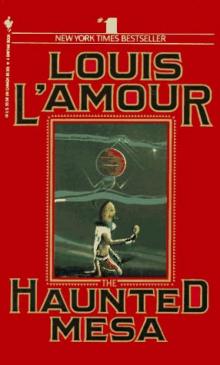 Novel 1987 - The Haunted Mesa (v5.0)
Novel 1987 - The Haunted Mesa (v5.0)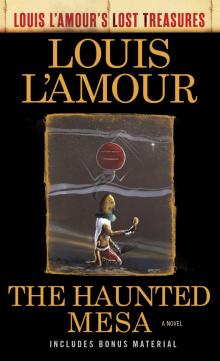 The Haunted Mesa (Louis L'Amour's Lost Treasures)
The Haunted Mesa (Louis L'Amour's Lost Treasures)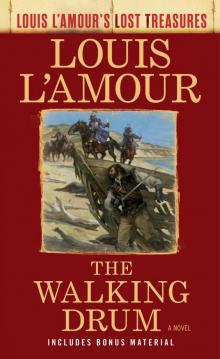 The Walking Drum (Louis L'Amour's Lost Treasures)
The Walking Drum (Louis L'Amour's Lost Treasures)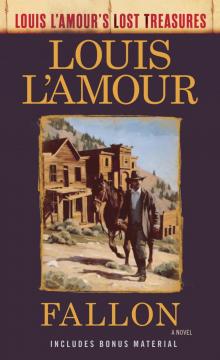 Fallon (Louis L'Amour's Lost Treasures)
Fallon (Louis L'Amour's Lost Treasures)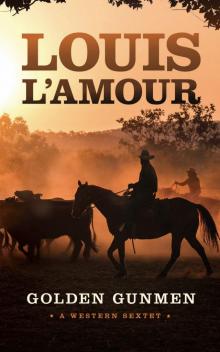 Golden Gunmen
Golden Gunmen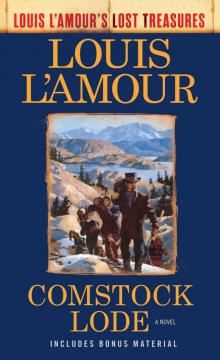 Comstock Lode
Comstock Lode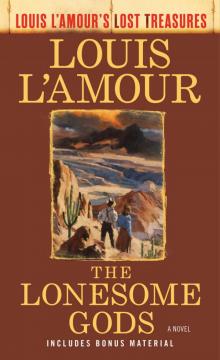 The Lonesome Gods (Louis L'Amour's Lost Treasures)
The Lonesome Gods (Louis L'Amour's Lost Treasures)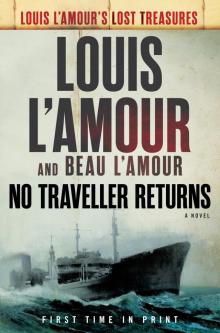 No Traveller Returns (Lost Treasures)
No Traveller Returns (Lost Treasures)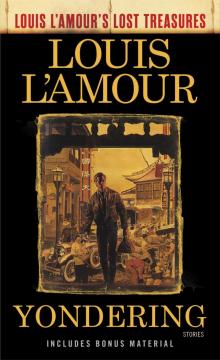 Yondering: Stories
Yondering: Stories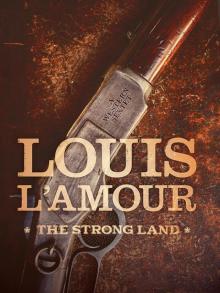 The Strong Land
The Strong Land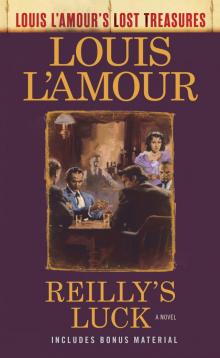 Reilly's Luck (Louis L'Amour's Lost Treasures)
Reilly's Luck (Louis L'Amour's Lost Treasures)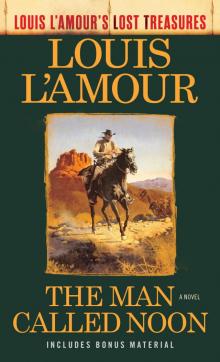 The Man Called Noon (Louis L'Amour's Lost Treasures)
The Man Called Noon (Louis L'Amour's Lost Treasures)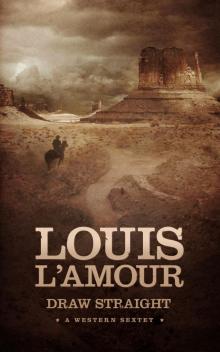 Draw Straight
Draw Straight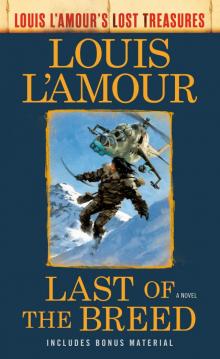 Last of the Breed (Louis L'Amour's Lost Treasures)
Last of the Breed (Louis L'Amour's Lost Treasures)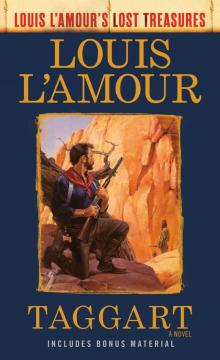 Taggart (Louis L'Amour's Lost Treasures)
Taggart (Louis L'Amour's Lost Treasures) The Hopalong Cassidy Novels 4-Book Bundle
The Hopalong Cassidy Novels 4-Book Bundle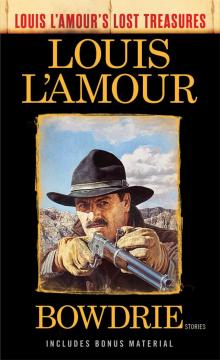 Bowdrie_Louis L'Amour's Lost Treasures
Bowdrie_Louis L'Amour's Lost Treasures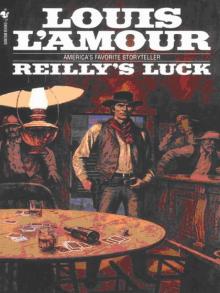 Reilly's Luck
Reilly's Luck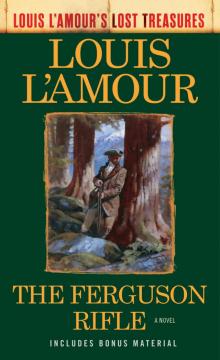 The Ferguson Rifle (Louis L'Amour's Lost Treasures)
The Ferguson Rifle (Louis L'Amour's Lost Treasures)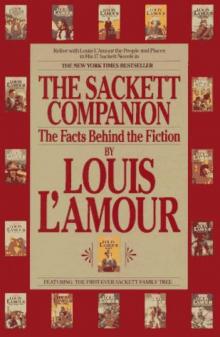 Sacketts 00 - The Sackett Companion (v5.0)
Sacketts 00 - The Sackett Companion (v5.0)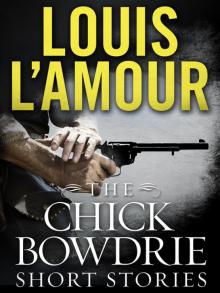 The Chick Bowdrie Short Stories Bundle
The Chick Bowdrie Short Stories Bundle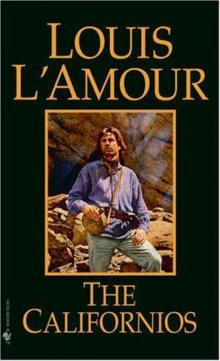 Novel 1974 - The Californios (v5.0)
Novel 1974 - The Californios (v5.0)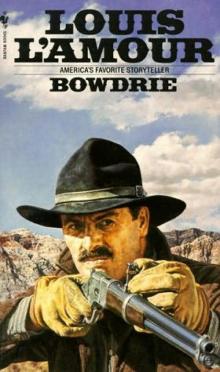 Collection 1983 - Bowdrie (v5.0)
Collection 1983 - Bowdrie (v5.0)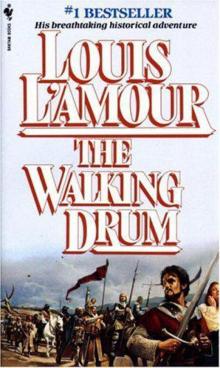 Novel 1984 - The Walking Drum (v5.0)
Novel 1984 - The Walking Drum (v5.0)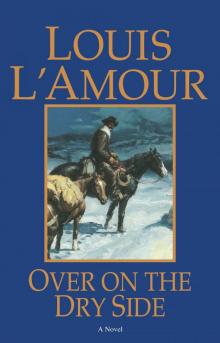 Over on the Dry Side
Over on the Dry Side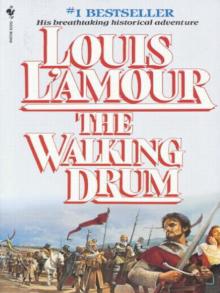 The Walking Drum
The Walking Drum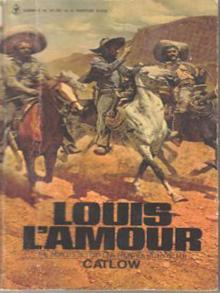 Novel 1963 - Catlow (v5.0)
Novel 1963 - Catlow (v5.0)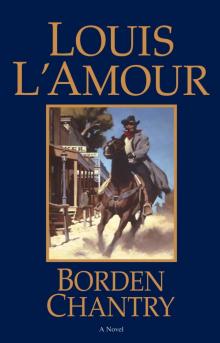 Borden Chantry
Borden Chantry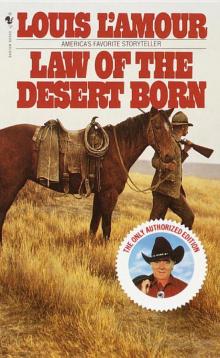 Collection 1983 - Law Of The Desert Born (v5.0)
Collection 1983 - Law Of The Desert Born (v5.0)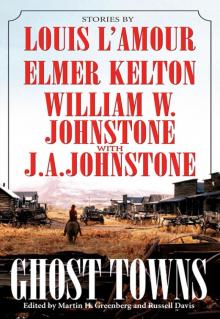 Ghost Towns
Ghost Towns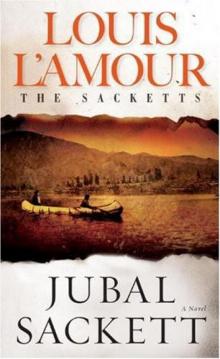 Jubal Sackett (1985) s-4
Jubal Sackett (1985) s-4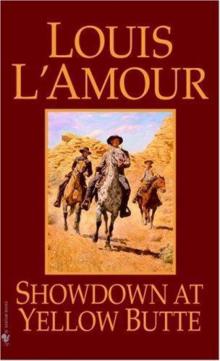 Novel 1953 - Showdown At Yellow Butte
Novel 1953 - Showdown At Yellow Butte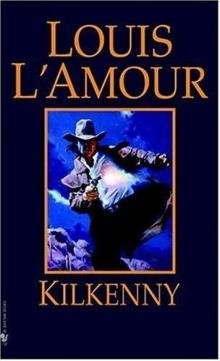 Kilkenny 03 - Kilkenny (v5.0)
Kilkenny 03 - Kilkenny (v5.0)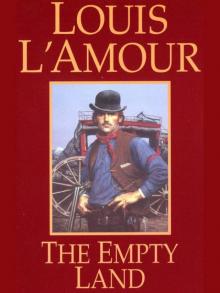 Novel 1969 - The Empty Land (v5.0)
Novel 1969 - The Empty Land (v5.0)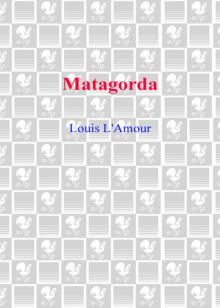 Matagorda
Matagorda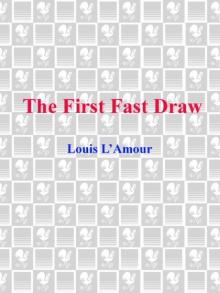 The First Fast Draw
The First Fast Draw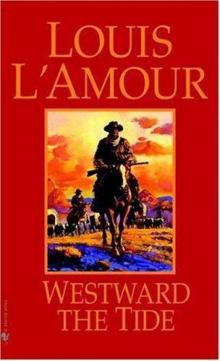 Novel 1950 - Westward The Tide (v5.0)
Novel 1950 - Westward The Tide (v5.0)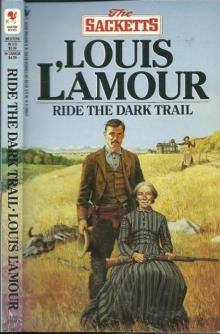 Ride the Dark Trail s-18
Ride the Dark Trail s-18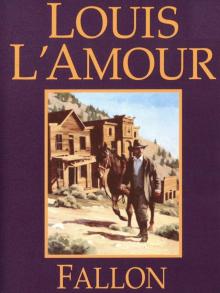 Novel 1963 - Fallon (v5.0)
Novel 1963 - Fallon (v5.0)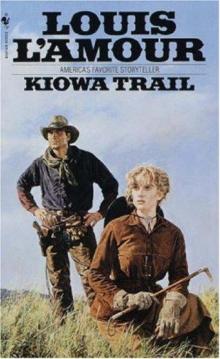 Novel 1964 - Kiowa Trail (v5.0)
Novel 1964 - Kiowa Trail (v5.0)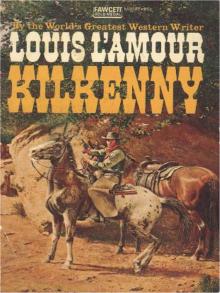 Kilkenny
Kilkenny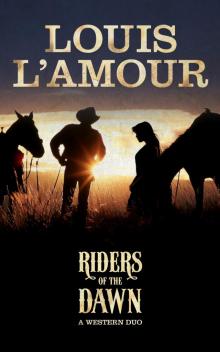 Riders of the Dawn
Riders of the Dawn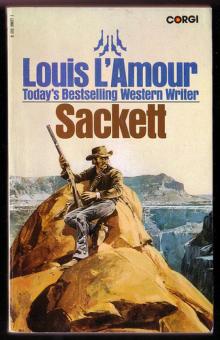 Sackett (1961) s-9
Sackett (1961) s-9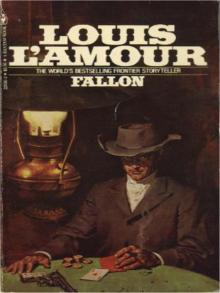 Fallon
Fallon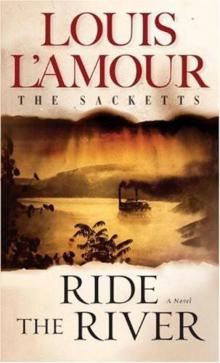 Ride the River (1983) s-5
Ride the River (1983) s-5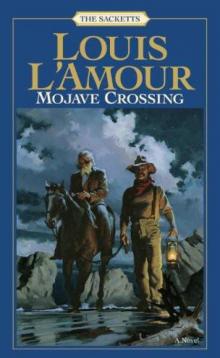 Mojave Crossing s-11
Mojave Crossing s-11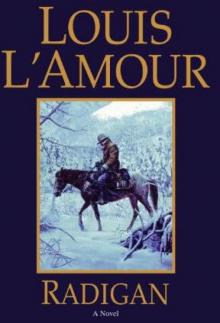 Novel 1958 - Radigan (v5.0)
Novel 1958 - Radigan (v5.0)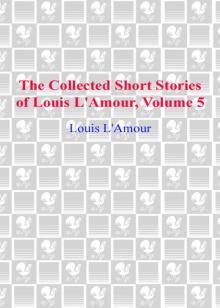 The Collected Short Stories of Louis L'Amour, Volume Five
The Collected Short Stories of Louis L'Amour, Volume Five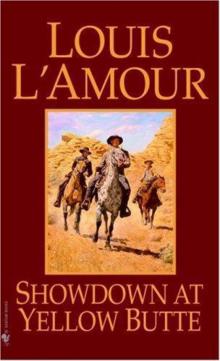 Novel 1953 - Showdown At Yellow Butte (v5.0)
Novel 1953 - Showdown At Yellow Butte (v5.0) Collection 1980 - Yondering
Collection 1980 - Yondering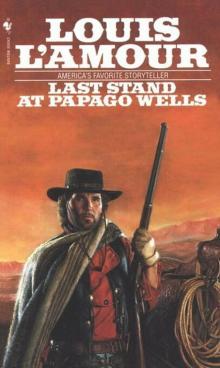 Novel 1957 - Last Stand At Papago Wells (v5.0)
Novel 1957 - Last Stand At Papago Wells (v5.0)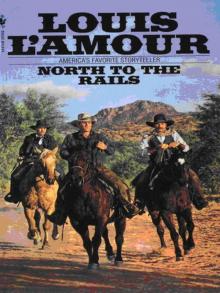 North To The Rails
North To The Rails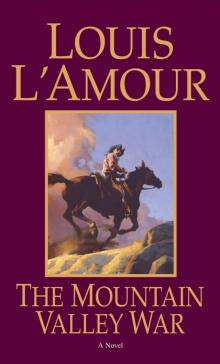 The Kilkenny Series Bundle
The Kilkenny Series Bundle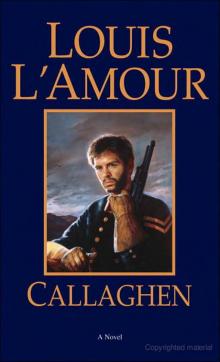 Novel 1972 - Callaghen (v5.0)
Novel 1972 - Callaghen (v5.0)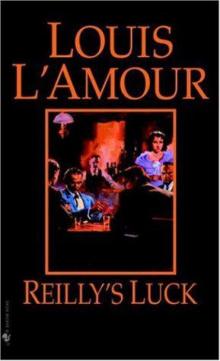 Novel 1970 - Reilly's Luck (v5.0)
Novel 1970 - Reilly's Luck (v5.0)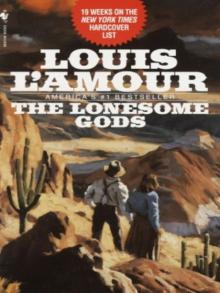 The Lonesome Gods
The Lonesome Gods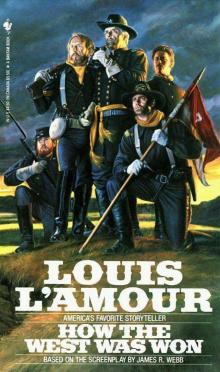 Novel 1963 - How The West Was Won (v5.0)
Novel 1963 - How The West Was Won (v5.0)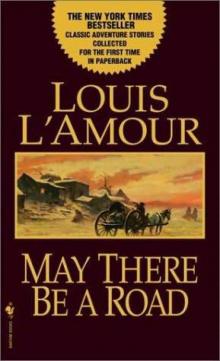 Collection 2001 - May There Be A Road (v5.0)
Collection 2001 - May There Be A Road (v5.0)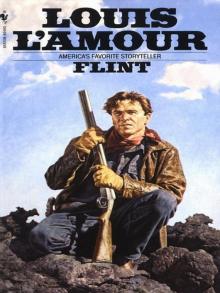 Flint
Flint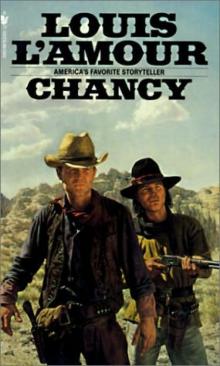 Novel 1968 - Chancy (v5.0)
Novel 1968 - Chancy (v5.0)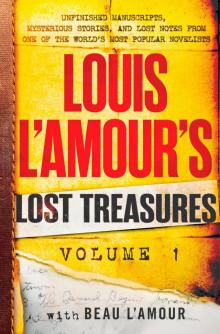 Volume 1: Unfinished Manuscripts, Mysterious Stories, and Lost Notes from One of the World's Most Popular Novelists
Volume 1: Unfinished Manuscripts, Mysterious Stories, and Lost Notes from One of the World's Most Popular Novelists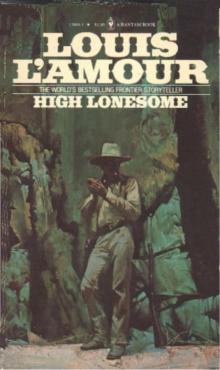 Novel 1962 - High Lonesome (v5.0)
Novel 1962 - High Lonesome (v5.0)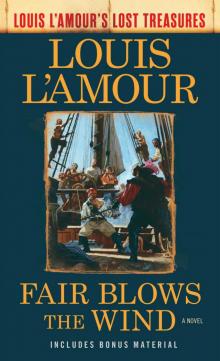 Fair Blows the Wind (Louis L'Amour's Lost Treasures)
Fair Blows the Wind (Louis L'Amour's Lost Treasures)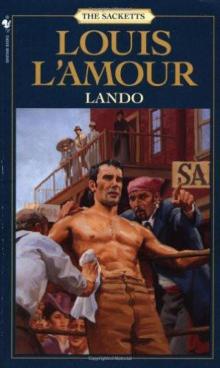 Lando s-8
Lando s-8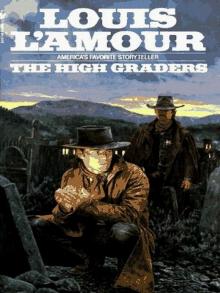 The High Graders
The High Graders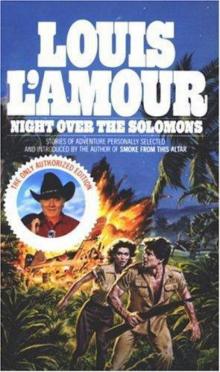 Collection 1986 - Night Over The Solomons (v5.0)
Collection 1986 - Night Over The Solomons (v5.0)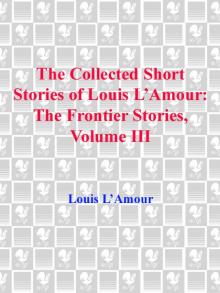 The Collected Short Stories of Louis L'Amour, Volume 3
The Collected Short Stories of Louis L'Amour, Volume 3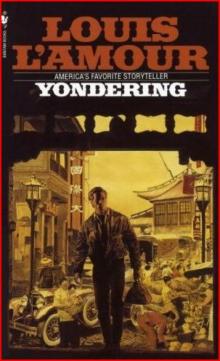 Collection 1980 - Yondering (v5.0)
Collection 1980 - Yondering (v5.0)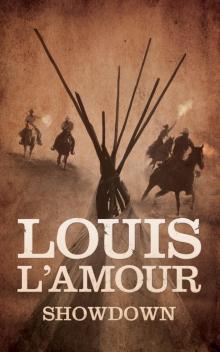 Showdown
Showdown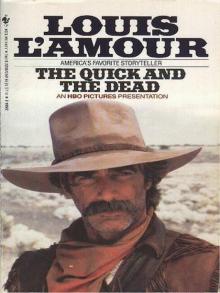 The Quick And The Dead
The Quick And The Dead Novel 1968 - Down The Long Hills (v5.0)
Novel 1968 - Down The Long Hills (v5.0)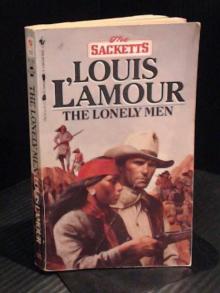 The Lonely Men s-14
The Lonely Men s-14 Bowdrie (Louis L'Amour's Lost Treasures)
Bowdrie (Louis L'Amour's Lost Treasures)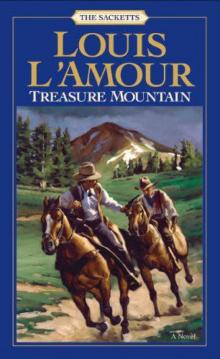 Treasure Mountain s-17
Treasure Mountain s-17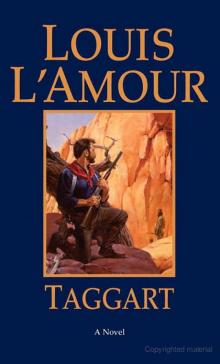 Novel 1959 - Taggart (V5.0)
Novel 1959 - Taggart (V5.0)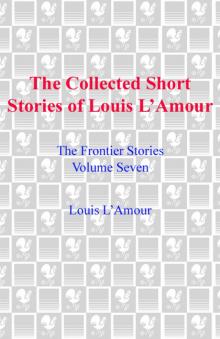 The Collected Short Stories of Louis L'Amour, Volume 7
The Collected Short Stories of Louis L'Amour, Volume 7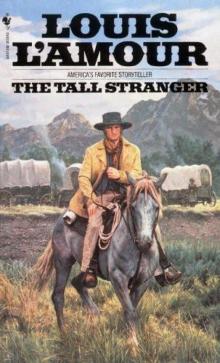 Novel 1957 - The Tall Stranger (v5.0)
Novel 1957 - The Tall Stranger (v5.0)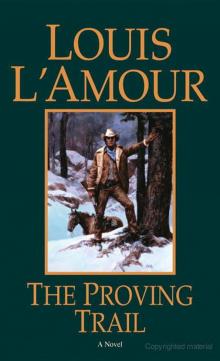 Novel 1978 - The Proving Trail (v5.0)
Novel 1978 - The Proving Trail (v5.0)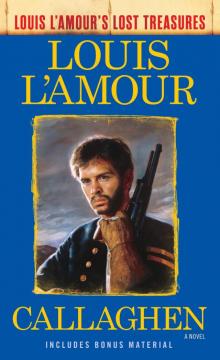 Callaghen (Louis L'Amour's Lost Treasures)
Callaghen (Louis L'Amour's Lost Treasures) Sitka
Sitka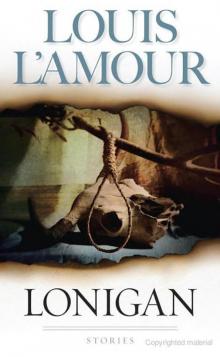 Collection 1988 - Lonigan (v5.0)
Collection 1988 - Lonigan (v5.0) The Californios
The Californios Novel 1966 - The Broken Gun (v5.0)
Novel 1966 - The Broken Gun (v5.0)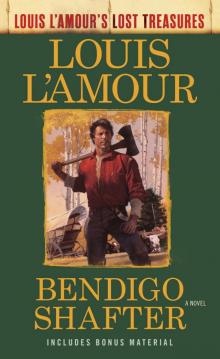 Bendigo Shafter (Louis L'Amour's Lost Treasures)
Bendigo Shafter (Louis L'Amour's Lost Treasures)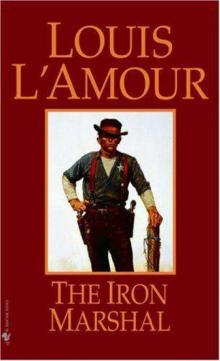 Novel 1979 - The Iron Marshall (v5.0)
Novel 1979 - The Iron Marshall (v5.0)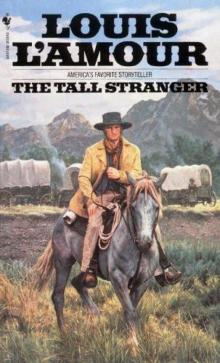 Novel 1957 - The Tall Stranger
Novel 1957 - The Tall Stranger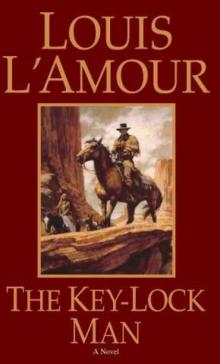 Novel 1965 - The Key-Lock Man (v5.0)
Novel 1965 - The Key-Lock Man (v5.0)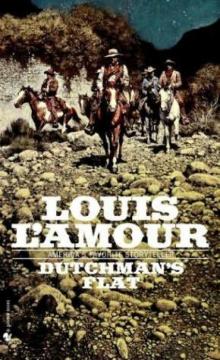 Collection 1986 - Dutchman's Flat (v5.0)
Collection 1986 - Dutchman's Flat (v5.0)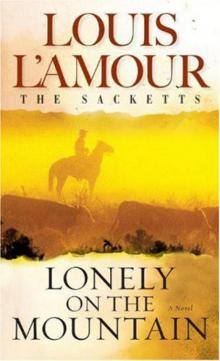 Lonely On the Mountain s-19
Lonely On the Mountain s-19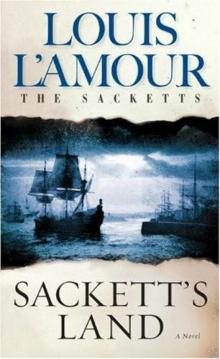 Sackett's Land
Sackett's Land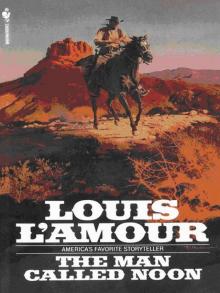 The Man Called Noon
The Man Called Noon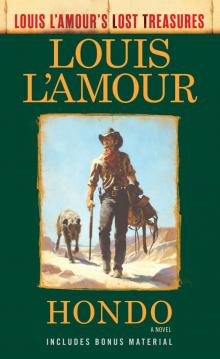 Hondo (Louis L'Amour's Lost Treasures)
Hondo (Louis L'Amour's Lost Treasures) The Lawless West
The Lawless West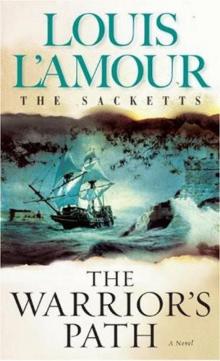 The Warrior's Path (1980) s-3
The Warrior's Path (1980) s-3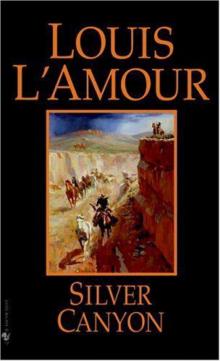 Novel 1956 - Silver Canyon (v5.0)
Novel 1956 - Silver Canyon (v5.0)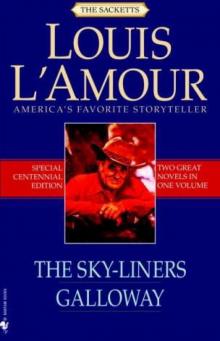 The Sky-Liners (1967) s-13
The Sky-Liners (1967) s-13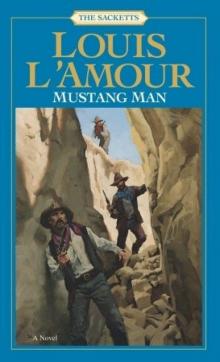 Mustang Man s-15
Mustang Man s-15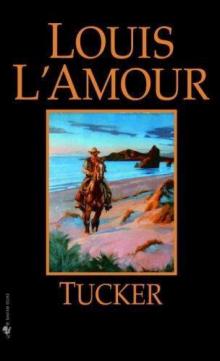 Novel 1971 - Tucker (v5.0)
Novel 1971 - Tucker (v5.0)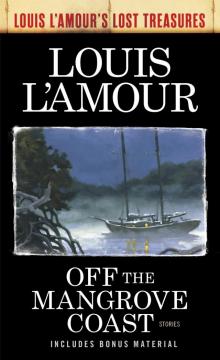 Off the Mangrove Coast (Louis L'Amour's Lost Treasures)
Off the Mangrove Coast (Louis L'Amour's Lost Treasures) Collection 2005 - Riding For The Brand (v5.0)
Collection 2005 - Riding For The Brand (v5.0)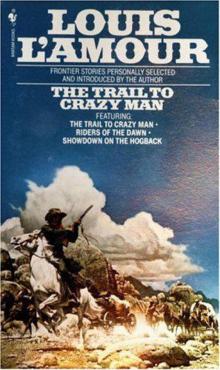 Collection 1986 - The Trail To Crazy Man (v5.0)
Collection 1986 - The Trail To Crazy Man (v5.0)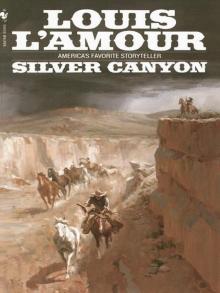 Silver Canyon
Silver Canyon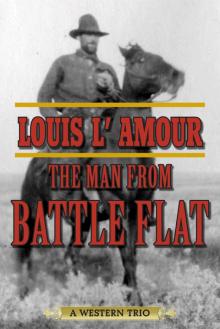 The Man from Battle Flat
The Man from Battle Flat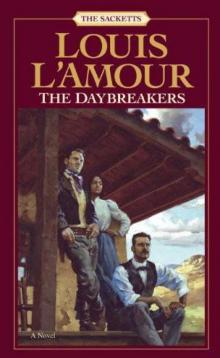 The Daybreakers (1960) s-6
The Daybreakers (1960) s-6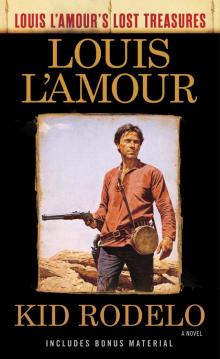 Kid Rodelo (Louis L'Amour's Lost Treasures)
Kid Rodelo (Louis L'Amour's Lost Treasures)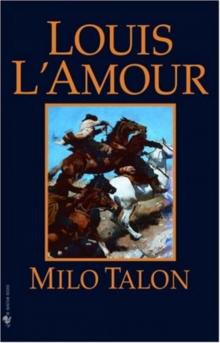 Milo Talon
Milo Talon Novel 1973 - The Man From Skibbereen (v5.0)
Novel 1973 - The Man From Skibbereen (v5.0)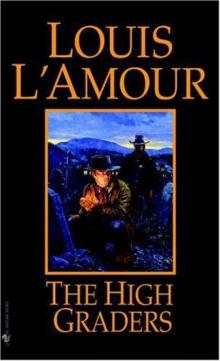 Novel 1965 - The High Graders (v5.0)
Novel 1965 - The High Graders (v5.0)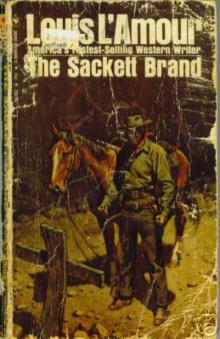 The Sacket Brand (1965) s-12
The Sacket Brand (1965) s-12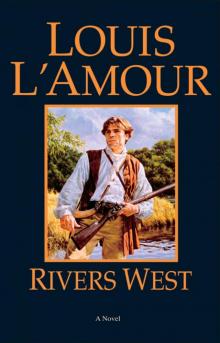 Rivers West
Rivers West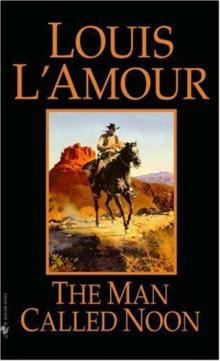 Novel 1970 - The Man Called Noon (v5.0)
Novel 1970 - The Man Called Noon (v5.0)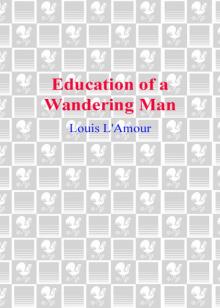 Education of a Wandering Man
Education of a Wandering Man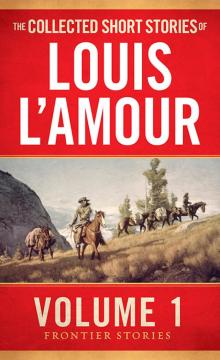 The Collected Short Stories of Louis L'Amour, Volume 1
The Collected Short Stories of Louis L'Amour, Volume 1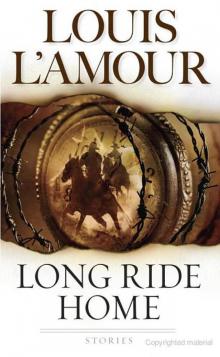 Collection 1989 - Long Ride Home (v5.0)
Collection 1989 - Long Ride Home (v5.0)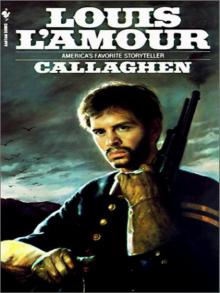 Callaghen
Callaghen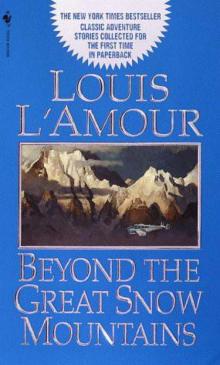 Collection 1999 - Beyond The Great Snow Mountains (v5.0)
Collection 1999 - Beyond The Great Snow Mountains (v5.0)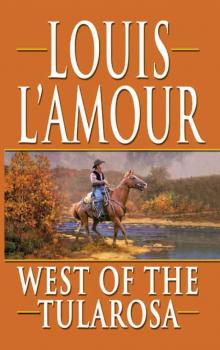 West of the Tularosa
West of the Tularosa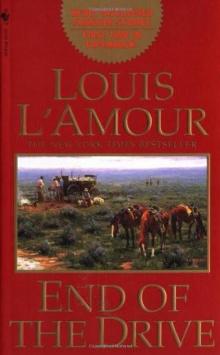 End Of the Drive (1997) s-7
End Of the Drive (1997) s-7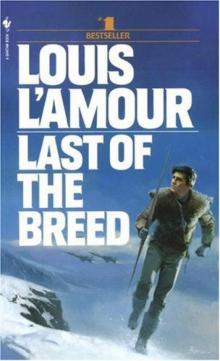 Novel 1986 - Last Of The Breed (v5.0)
Novel 1986 - Last Of The Breed (v5.0)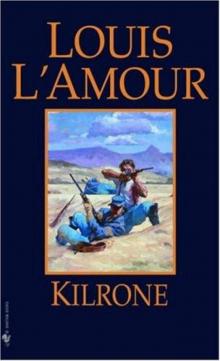 Novel 1966 - Kilrone (v5.0)
Novel 1966 - Kilrone (v5.0)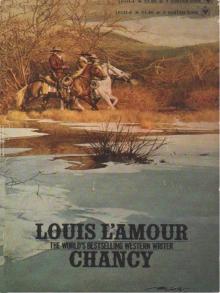 Chancy
Chancy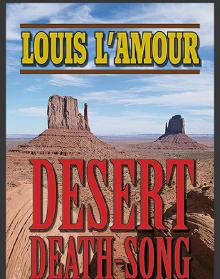 Desert Death-Song
Desert Death-Song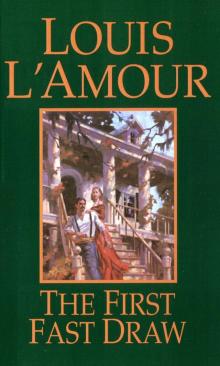 Novel 1959 - The First Fast Draw (v5.0)
Novel 1959 - The First Fast Draw (v5.0)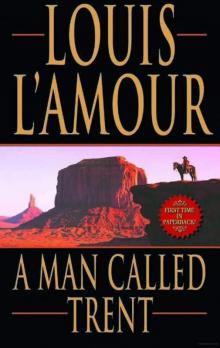 Kilkenny 02 - A Man Called Trent (v5.0)
Kilkenny 02 - A Man Called Trent (v5.0)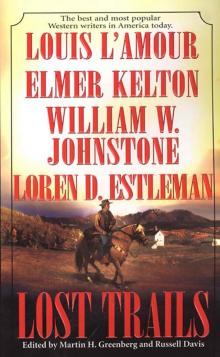 Lost Trails
Lost Trails Novel 1972 - Callaghen
Novel 1972 - Callaghen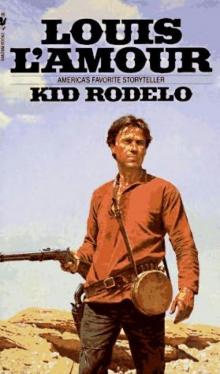 Novel 1966 - Kid Rodelo (v5.0)
Novel 1966 - Kid Rodelo (v5.0)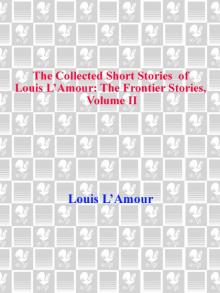 The Collected Short Stories of Louis L'Amour, Volume 2
The Collected Short Stories of Louis L'Amour, Volume 2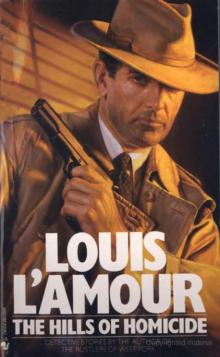 Collection 1983 - The Hills Of Homicide (v5.0)
Collection 1983 - The Hills Of Homicide (v5.0)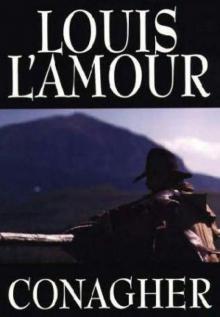 Novel 1969 - Conagher (v5.0)
Novel 1969 - Conagher (v5.0)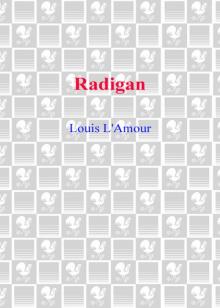 Radigan
Radigan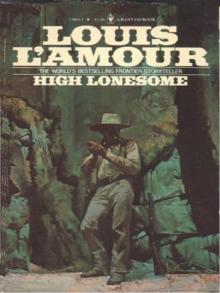 High Lonesome
High Lonesome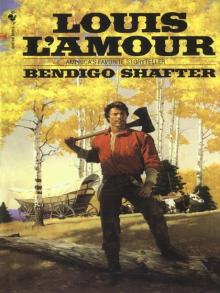 Bendigo Shafter
Bendigo Shafter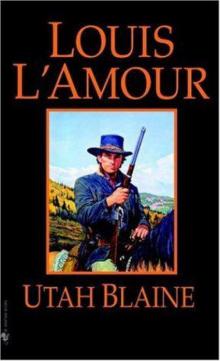 Novel 1954 - Utah Blaine (As Jim Mayo) (v5.0)
Novel 1954 - Utah Blaine (As Jim Mayo) (v5.0)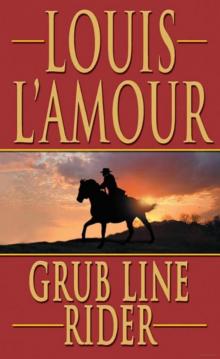 Collection 1990 - Grub Line Rider (v5.0)
Collection 1990 - Grub Line Rider (v5.0)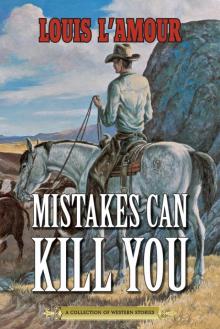 Mistakes Can Kill You
Mistakes Can Kill You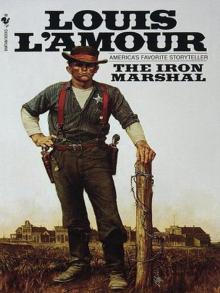 The Iron Marshall
The Iron Marshall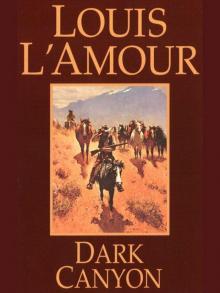 Novel 1963 - Dark Canyon (v5.0)
Novel 1963 - Dark Canyon (v5.0)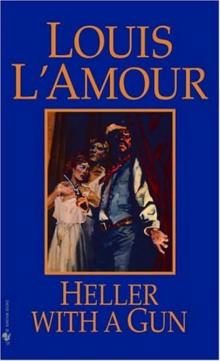 Novel 1955 - Heller With A Gun (v5.0)
Novel 1955 - Heller With A Gun (v5.0)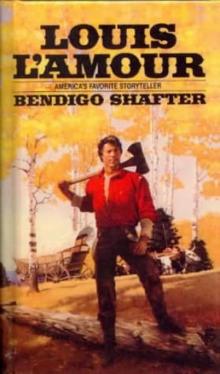 Novel 1978 - Bendigo Shafter (v5.0)
Novel 1978 - Bendigo Shafter (v5.0)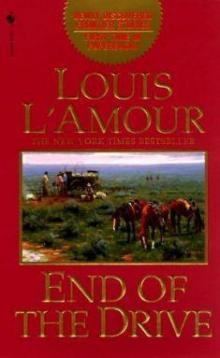 Collection 1997 - End Of The Drive (v5.0)
Collection 1997 - End Of The Drive (v5.0)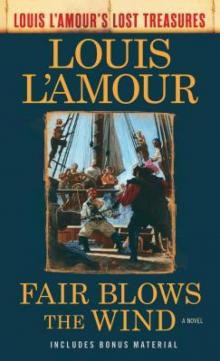 Fair Blows the Wind
Fair Blows the Wind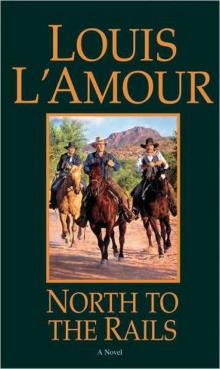 Talon & Chantry 07 - North To The Rails (v5.0)
Talon & Chantry 07 - North To The Rails (v5.0)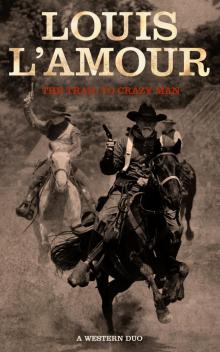 The Trail to Crazy Man
The Trail to Crazy Man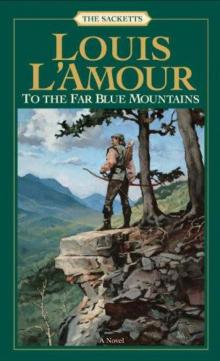 To the Far Blue Mountains (1976) s-2
To the Far Blue Mountains (1976) s-2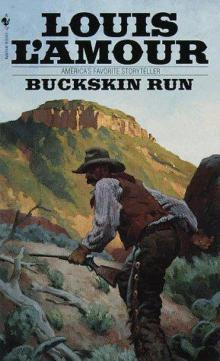 Collection 1981 - Buckskin Run (v5.0)
Collection 1981 - Buckskin Run (v5.0)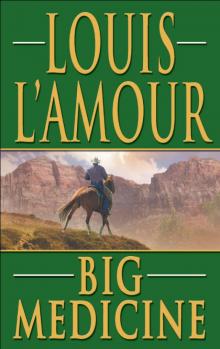 Collection 2008 - Big Medicine (v5.0)
Collection 2008 - Big Medicine (v5.0)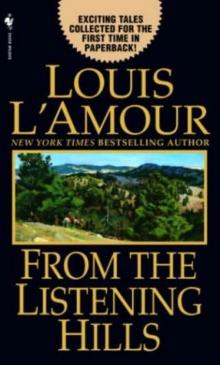 Collection 2003 - From The Listening Hills (v5.0)
Collection 2003 - From The Listening Hills (v5.0)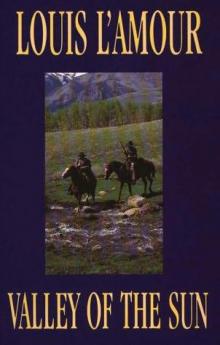 Collection 1995 - Valley Of The Sun (v5.0)
Collection 1995 - Valley Of The Sun (v5.0)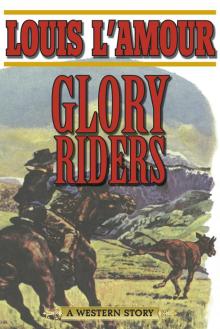 Glory Riders
Glory Riders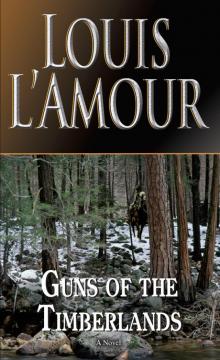 Guns of the Timberlands
Guns of the Timberlands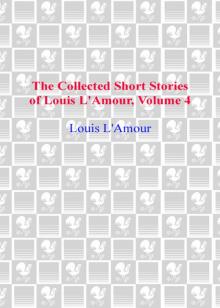 The Collected Short Stories of Louis L'Amour, Volume Four
The Collected Short Stories of Louis L'Amour, Volume Four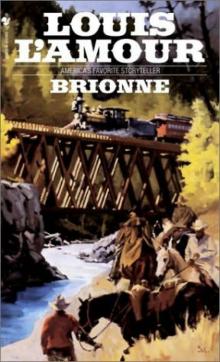 Novel 1968 - Brionne (v5.0)
Novel 1968 - Brionne (v5.0)